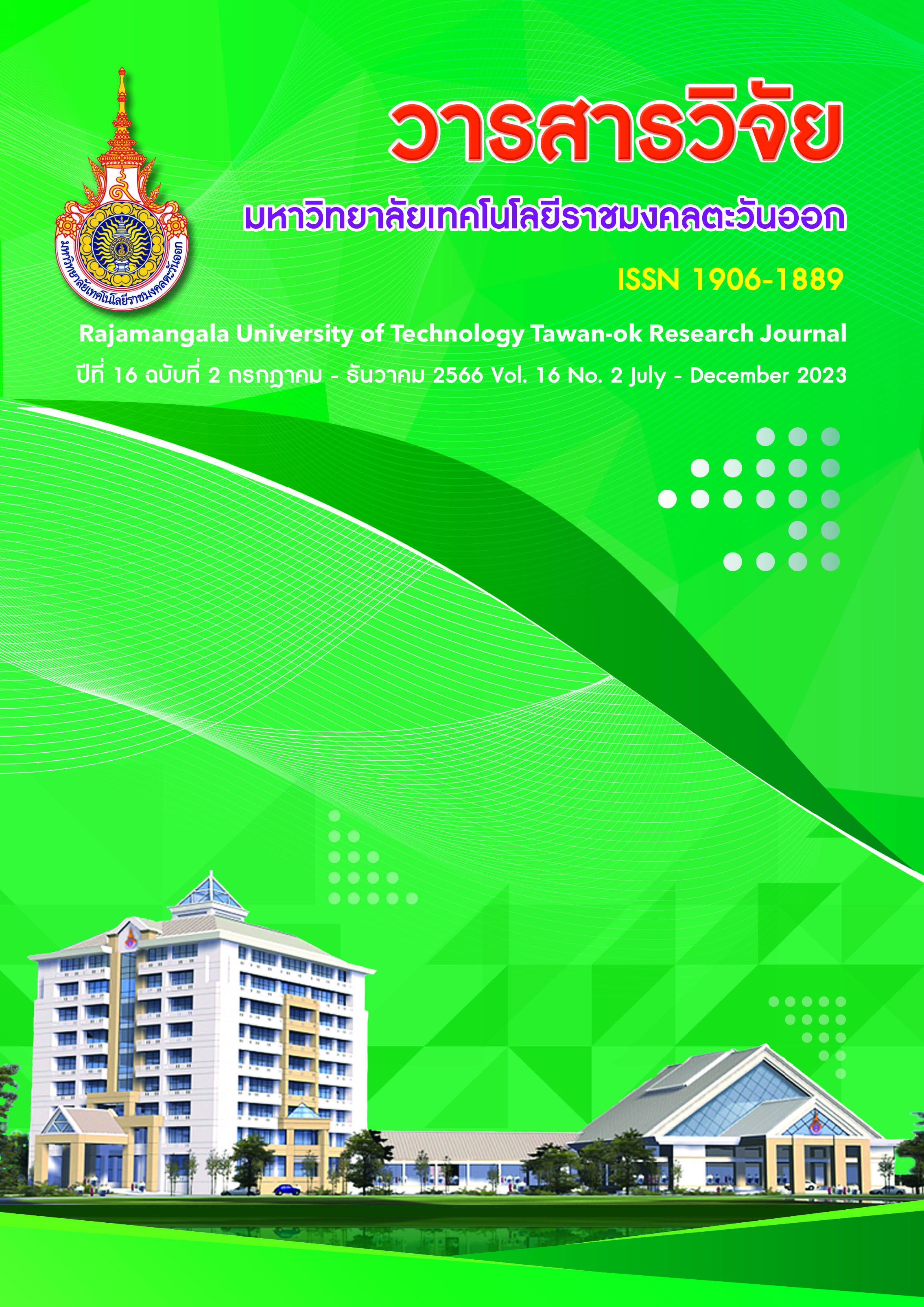A Prototype of a Dog Skull Made from Plastic
Main Article Content
Abstract
This research is to develop anatomy teaching media. By using real animal organs to create 3D simulation images using ready-made image processing programs. To order a 3D printer (3D Printer) to create plastic animal organs with realistic shapes. In this research, 4 real samples were used and 8 pieces were created, including a dog skull, lower jaw, right-halved dog skull, left-halved dog skull. The research process has 4 steps, starting with taking photos and collecting data on the prototype pieces. Using a camera that adjusts to 2 height levels, take photos rotating around the workpiece every 10 degrees. Press to record approximately 36 images. Step 2 Take 1 image of all workpieces in 1 folder and analyze the images in the Meshroom Version 2021.1 program. .0 In order for the program to create a 3D model, then in step 3 use the Meshmixer program to adjust the 3D model, improving the size and adjusting the shape to be as close to the real thing as possible. The results of the size analysis are equivalent to the real thing. The final step is to convert the .OBJ file extension to an STL file extension and a GCODE file extension using the Creality Slicer V.4.8 program and then print it using an Ender 3 v2 3D printer with flesh-colored and white PLA plastic. Research results: Creation of each dog skull piece. By using the Meshroom 2021 program, the Meshmixer program, the Creality Slicer V.4.8 program, and the Ender 3 v2 3D printer, 4 solid-color and 4 white PLA plastic pieces were obtained. The printing time and total weight were as follows. Dog skull took 23 hours 51 minutes to print, total weight 233 grams. Lower jaw, took 7 hours 43 minutes to print, total weight 55 grams. Dog skull cut in right half. It took 17 hours and 59 minutes to print, total weight 123 grams, and the left half of a dog's skull was cut. It takes 17 hours and 3 minutes to print. Total weight is 120 grams. The printing time for each model is the average time per 1 piece. Summary of the research results: It was found that the 3D model files created from the 8 3D printers were realistic in terms of structure and appearance. But there are details of the workpiece that cannot be made, such as skull cracks, structures within the nasal cavity, elements within the skull fossa, and various holes on the surface of the skull. This is due to the limitations of using ready-made programs in the 3D modeling process. In terms of quantitative research results, all 4 pieces will be used as quality anatomy teaching materials. It is strong, durable, lightweight, convenient to move and store.
Article Details

This work is licensed under a Creative Commons Attribution-NonCommercial-NoDerivatives 4.0 International License.
References
Fanchian. N. (2020). Key educational technology trends influencing 2020. Retrieved from https://www.trueplookpanya.com/education/content/79314. (in Thai)
Neotech. (2021). What is 3D Scanner? How many types are there? (Updated 2021). Retrieved from https://www.print3dd.com/what-is-3d-scaner/. (in Thai)
Office of Knowledge Management and Development (2021). Necessary skills in the 21st century. Retrieved from https://www.okmd.or.th/okmd-opportunity/new-gen/262/. (in Thai)
Puangpaka, A. and Wongbunmak, S. (2017). Virtual technology in library work. Pikul Journal, 15(1): page numbers 1-18. Kamphaeng Phet: JP Print Ordinary Partnership. (in Thai)
Suprasert, A., Liamsiricharoen, M., Kunchaenak, S. and Kobsanthia, K. (2015). Innovative agriculture Collection of research innovations on the 72nd anniversary of Kasetsart University. Rubber model, teaching aids. (Pages 129-130). Kasetsart University. (in Thai)
Thiengchanya, C. (2020). Development of a scanning object system for storing highly detailed 3D texture data for planar and non-plane surfaces. Master of Science (Computer Science and Information Systems) Faculty of Applied Statistics, National Institute of Development Administration, [On-line]. Available: https://repository.nida.ac.th/items/4e483005-b3ef-49d0-92ca-02afefc06f8e. (in Thai)


